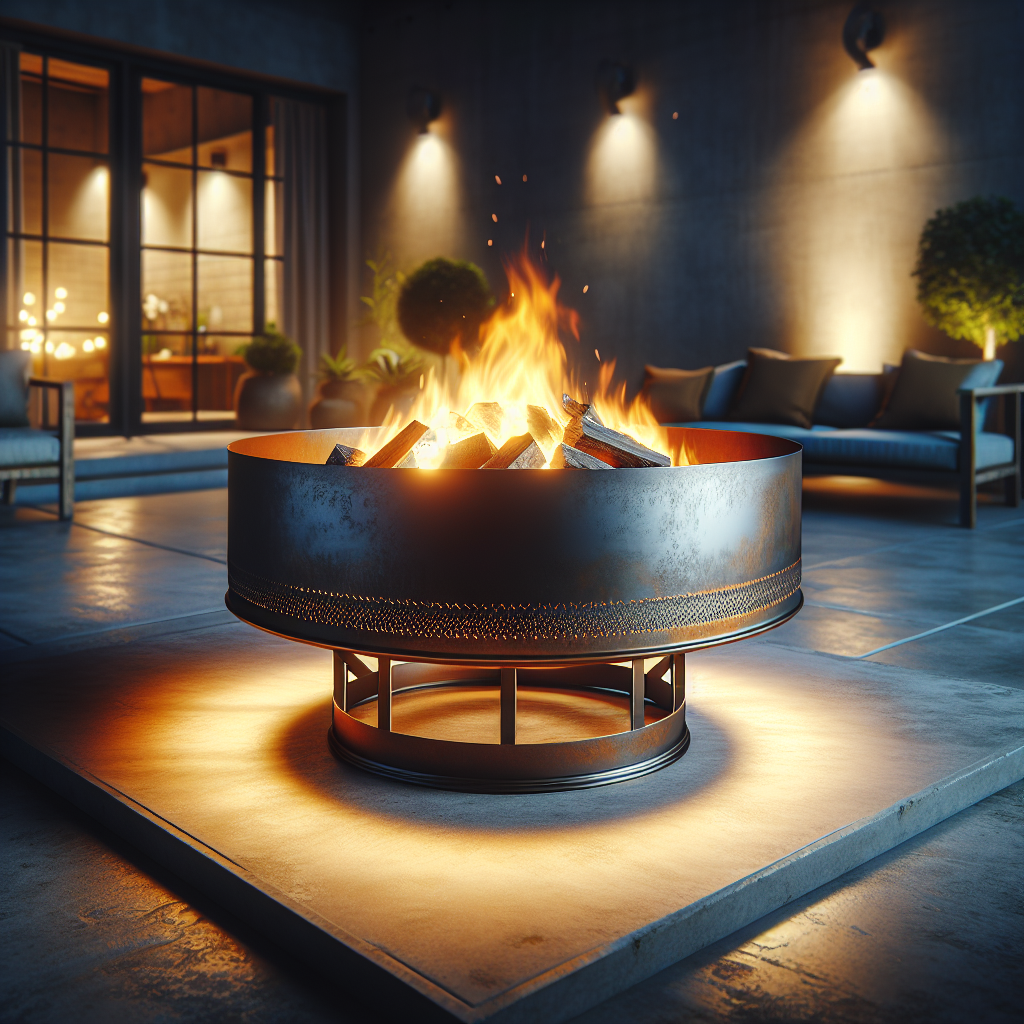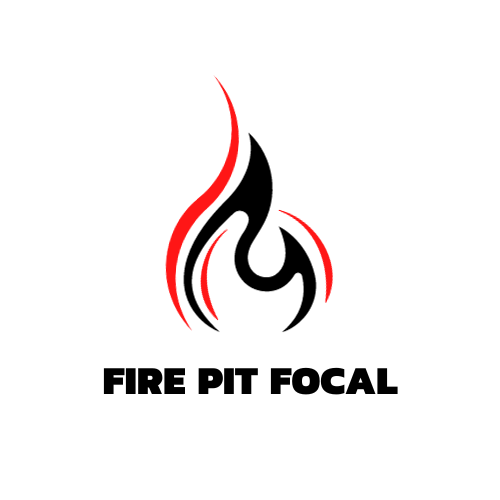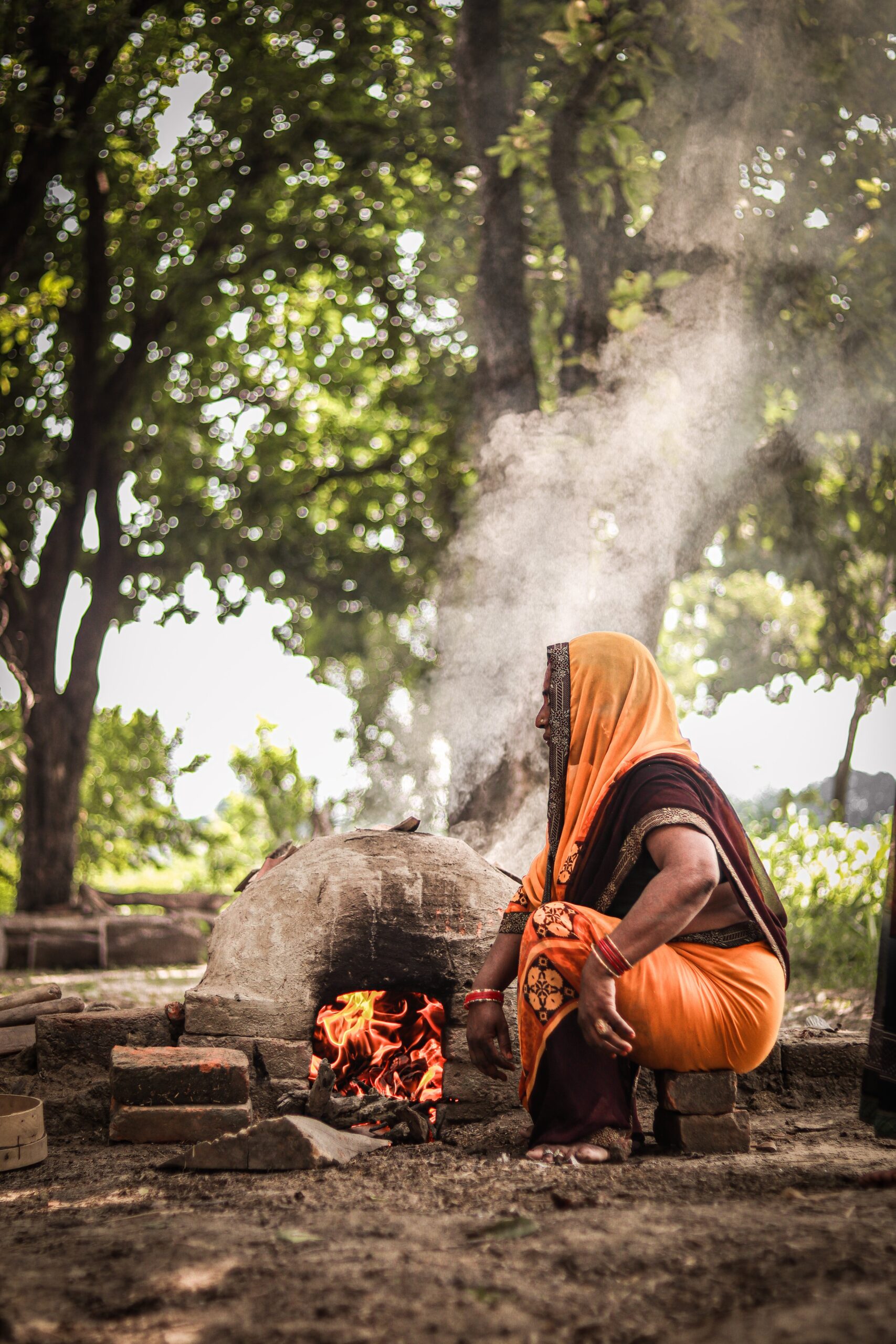Imagine sitting under the night sky, surrounded by your loved ones, as the warmth of a crackling fire pit embraces you. Fire pits have become a popular addition to outdoor spaces, providing a cozy and inviting atmosphere. But what materials should you consider when it comes to constructing your perfect fire pit? From durable metals to natural stones, this article explores the best options for fire pit materials, ensuring you can enjoy those magical nights for years to come.
Factors to Consider
Safety
When choosing the material for your fire pit, safety should be a top priority. You want to ensure that the materials used are fire-resistant and capable of withstanding high temperatures. This will not only protect you and your loved ones but also prevent any accidents or injuries. Look for materials that have been tested and certified for fire safety to give you peace of mind when enjoying your fire pit.
Durability
A fire pit is an investment that should last for years to come, so durability is an important factor to consider. You want to choose materials that are built to withstand the elements and regular use. Durable materials will also require less maintenance and repairs over time, saving you both time and money. Look for materials that are known for their strength and longevity to ensure your fire pit stands the test of time.
Heat Retention
The heat retention capabilities of your fire pit material can greatly affect the overall experience. Some materials are better at retaining heat and distributing it evenly, which can enhance the warmth and coziness of your gathering. Consider materials that are known for their heat retention properties, such as cast iron or clay, to maximize the comfort and enjoyment of your fire pit.
Budget
Your budget will play a significant role in determining the materials you choose for your fire pit. Different materials come with different price tags, so it’s important to consider what you’re willing to spend. However, keep in mind that investing in quality materials may be more cost-effective in the long run, as they are likely to require fewer repairs and replacements. Evaluate your budget and explore different material options to find the right balance between affordability and durability.
Aesthetic Appeal
While safety and durability are crucial, you also want your fire pit to enhance the overall aesthetic of your outdoor space. Consider the style and design of your fire pit and how it will complement your existing decor. Different materials offer various finishes, colors, and textures, allowing you to create a cohesive and visually appealing outdoor environment. Take into account the overall theme and atmosphere you want to achieve to choose a material that aligns with your vision.
Metal Fire Pit Materials
Steel
Steel is a popular choice for fire pit construction due to its durability and strength. It is highly resistant to heat and can withstand high temperatures without warping or cracking. Steel fire pits are known for their longevity and ability to withstand the elements, making them a great option for outdoor use. However, steel may rust over time, so it’s important to properly maintain and protect your fire pit to ensure its longevity.
Cast Iron
Cast iron fire pits are known for their classic and timeless look. They are incredibly durable and have excellent heat retention properties, making them perfect for cool evenings. Cast iron fire pits require minimal maintenance and can withstand years of use. However, they are quite heavy and may be more difficult to move around compared to other materials.
Aluminum
Aluminum fire pits are lightweight and easy to move around, making them a great option for those who want flexibility. They are resistant to rust and corrosion, ensuring their durability and longevity. Aluminum fire pits also heat up quickly and cool down just as fast, which can be beneficial if you’re looking for a fire pit that offers quick warmth. However, aluminum may not retain heat as well as other materials, so keep that in mind when considering this option.
Copper
Copper fire pits are not only functional but also add a touch of elegance to any outdoor space. They have excellent heat retention properties and can distribute heat evenly, creating a cozy atmosphere. Copper develops a beautiful patina over time, adding to its aesthetic appeal. However, copper fire pits can be more expensive and require regular maintenance to prevent tarnishing.
Stainless Steel
Stainless steel fire pits combine durability, heat resistance, and a sleek design. They are resistant to rust and corrosion, making them perfect for outdoor use. Stainless steel is also easy to clean and maintain, making it a convenient choice for those looking for low-maintenance options. However, stainless steel fire pits may be more expensive compared to other metal options.
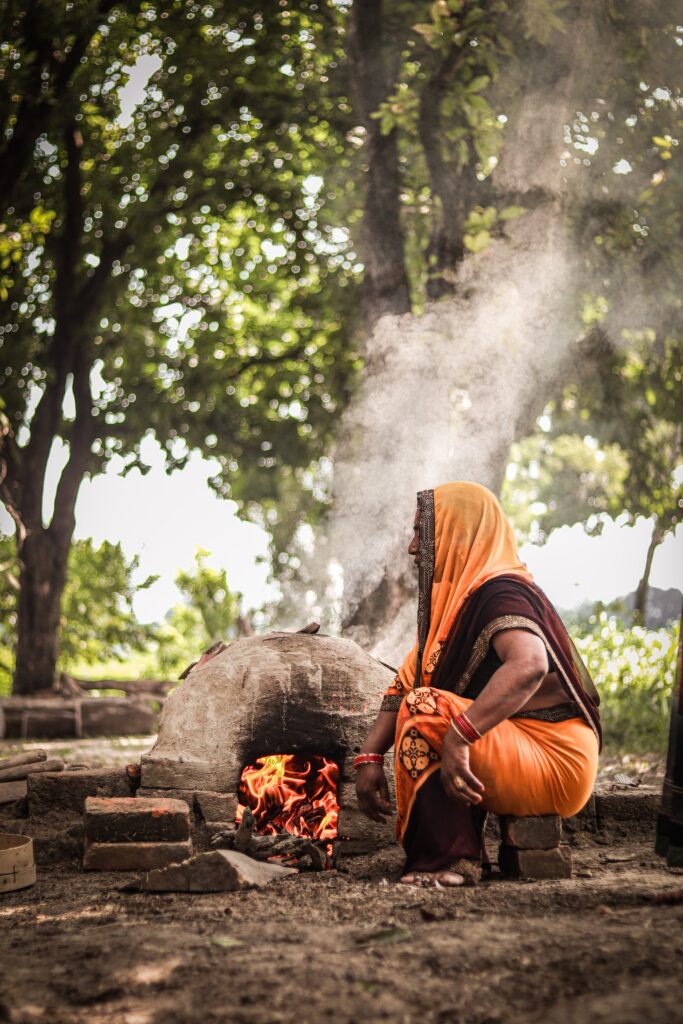
Stone Fire Pit Materials
Brick
Brick fire pits offer a rustic and traditional look to any outdoor space. They are known for their durability and ability to withstand high temperatures. Brick fire pits can blend seamlessly with a variety of outdoor designs and offer a timeless appeal. However, they may require some maintenance over time, such as repairing any cracked or chipped bricks.
Concrete
Concrete fire pits are a popular choice due to their versatility and durability. They can be easily customized in terms of shape, size, and design, allowing you to create a fire pit that suits your preferences. Concrete fire pits are also heat-resistant and require minimal maintenance. However, concrete can crack or chip over time, so it’s important to properly seal and protect the surface.
Natural Stone
Natural stone fire pits add a touch of natural beauty to any outdoor space. They come in a variety of colors and textures, allowing you to create a unique and visually stunning fire pit. Natural stone is highly durable and can withstand extreme temperatures. However, it may require some initial preparation and sealing to ensure its longevity.
Flagstone
Flagstone fire pits offer a more rustic and organic look. They are highly durable and can handle high temperatures without cracking or warping. Flagstone fire pits can be customized in terms of shape and size, allowing you to create a fire pit that fits your space perfectly. However, flagstone may require some level of maintenance to ensure its longevity and prevent any shifting or settling.
Granite
Granite fire pits are known for their elegance and durability. They offer a sleek and modern look to any outdoor space. Granite is highly resistant to heat and can withstand high temperatures without any issues. It is also resistant to scratches and stains, making it a low-maintenance option. However, granite fire pits may be more expensive compared to other stone materials.
Clay Fire Pit Materials
Terracotta
Terracotta fire pits add a touch of warmth and charm to any outdoor space. They are made from natural clay and have excellent heat retention properties. Terracotta fire pits can provide a cozy and intimate atmosphere, perfect for gathering around with friends and family. However, terracotta may be prone to cracking over time if not properly cared for, so it’s important to protect it from extreme temperatures.
Ceramic
Ceramic fire pits offer versatility and a wide range of design options. They can be customized in terms of shapes, sizes, and colors, allowing you to personalize your fire pit. Ceramic is a durable material that can withstand high temperatures. However, ceramic fire pits may be more fragile compared to other materials, so they require careful handling and protection.
Refractory Clay
Refractory clay fire pits are specifically designed to withstand extremely high temperatures. They are made from a special type of clay that can handle intense heat without cracking or breaking. Refractory clay fire pits are perfect for those who enjoy intense fires and want a fire pit that can handle the heat. However, they may be more expensive compared to other clay materials.

Recycled Fire Pit Materials
Washers and Dryers
Washers and dryers can be repurposed into unique and creative fire pits. By removing the drums and adding a few modifications, you can transform these household appliances into functional fire pits. Not only does this recycling option save these appliances from landfills, but it also creates a conversation piece for your outdoor space. However, keep in mind that the drums may have coatings or materials that are not safe for burning, so proper cleaning and preparation are necessary.
Car Rims
Car rims can be upcycled into eye-catching fire pits with a modern and industrial look. The circular shape of car rims makes them perfectly suited for fire pits, and their robustness ensures durability. With a little creativity, you can transform a car rim into a unique centerpiece for your outdoor gatherings. However, it’s important to ensure that the car rim you choose is suitable for fire pit use and free of any hazardous substances.
Scrap Metal Pieces
Scrap metal pieces offer endless possibilities for creating one-of-a-kind fire pits. From old barrels to discarded metal parts, you can let your imagination run wild and repurpose these materials into functional and artistic fire pits. By selecting high-quality scrap metal pieces and ensuring proper venting and safety measures, you can create a truly unique fire pit that reflects your personality. However, it’s essential to be cautious when working with scrap metal and consider safety guidelines throughout the construction process.
Fireproof Blocks
Insulating Fire Bricks
Insulating fire bricks are specifically designed to withstand high temperatures and provide excellent insulation. These bricks are made from refractory material, which can handle extreme heat without cracking or warping. Insulating fire bricks are a popular choice among DIY enthusiasts who want to build their own fire pits. However, it’s important to follow proper construction techniques and safety guidelines when working with these bricks.
Concrete Blocks
Concrete blocks are a versatile and affordable option for constructing fire pits. They are readily available and easy to work with, making them a popular choice among homeowners. Concrete blocks can withstand high temperatures and provide a stable and sturdy base for your fire pit. However, it’s important to choose concrete blocks specifically designed for fire pit use, as not all blocks can handle the heat.
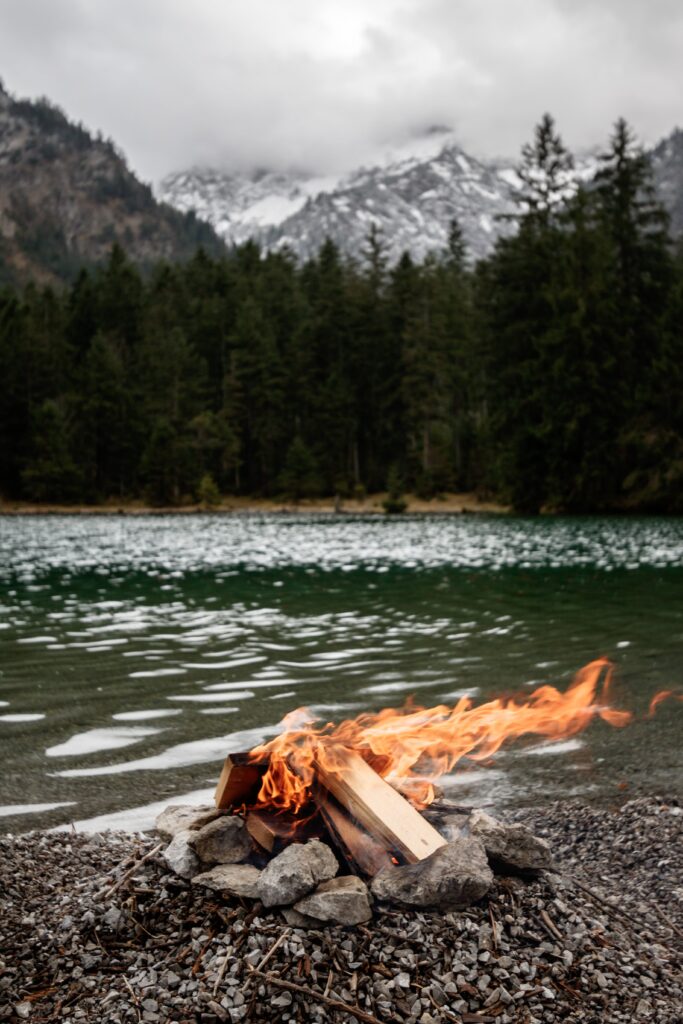
Fire Pit Accessories
Screen
A fire pit screen is an essential accessory that adds an extra layer of safety. It helps to contain sparks and embers, preventing them from escaping and potentially causing accidents or damage. A screen also provides protection from the wind, which can disturb the flames and affect the overall fire pit experience. When choosing a fire pit screen, make sure it fits securely and is made from a durable material that can withstand high temperatures.
Grate
A fire pit grate is a useful accessory that elevates the firewood and allows for better airflow. It helps to improve the efficiency of your fire by promoting better combustion and reducing the amount of smoke produced. A grate also makes it easier to clean out ashes and debris, ensuring a cleaner and more enjoyable fire pit experience. Look for a grate that fits your fire pit size and is made from a sturdy material, such as cast iron or stainless steel, for maximum durability.
Cover
A fire pit cover is an accessory that helps protect your fire pit from the elements when not in use. It keeps rain, snow, and debris out, preventing damage and extending the lifespan of your fire pit. A cover also helps to keep your fire pit clean and ready for use at any time. Look for a cover that is weather-resistant and fits snugly over your fire pit for optimal protection.
Fuel Types
Wood-Burning
Wood-burning fire pits offer a traditional and authentic campfire experience. They create a warm and inviting atmosphere and provide the crackling sounds and mesmerizing visuals of a real wood fire. Wood-burning fire pits also allow you to experiment with different types of wood, such as oak, pine, or applewood, to enhance the aroma and ambiance. However, wood-burning fire pits require a steady supply of firewood and proper fire management to ensure safety and prevent excessive smoke.
Gas
Gas fire pits are a convenient and hassle-free option for those who want instant warmth and ambiance. They are powered by natural gas or propane and can be easily ignited with a switch or a remote control. Gas fire pits provide consistent heat without the need for storing firewood or dealing with ashes. They are also cleaner and produce minimal smoke, making them a popular choice for those with allergies or respiratory issues. However, gas fire pits might require professional installation and a gas line connection, making them less portable compared to other options.
Propane
Propane fire pits are similar to gas fire pits in terms of convenience and ease of use. They also offer instant heat and require minimal maintenance. Propane fire pits use propane tanks, which can be easily replaced or refilled when empty. This makes them a portable option, allowing you to move the fire pit around to different areas of your outdoor space. However, keep in mind that propane tanks need to be handled and stored properly to ensure safety.
Gel
Gel fire pits are a versatile and portable option for those who want a fire pit they can take anywhere. Gel fuel comes in small cans or bottles and can be easily ignited with a match or lighter. Gel fire pits are smoke-free and produce minimal odor, making them suitable for use in areas where traditional wood fires are not allowed. While gel fire pits provide a decorative and controlled flame, they may not generate as much heat as other fuel types.
Bio Ethanol
Bio ethanol fire pits offer a clean and eco-friendly alternative to traditional wood-burning fire pits. Bio ethanol is a renewable and sustainable fuel that produces minimal emissions when burned. Bio ethanol fire pits come in various sizes and designs, allowing you to choose a style that complements your outdoor space. They are also smoke-free and require no venting or chimney. However, bio ethanol fuel can be more expensive compared to other fuel types.
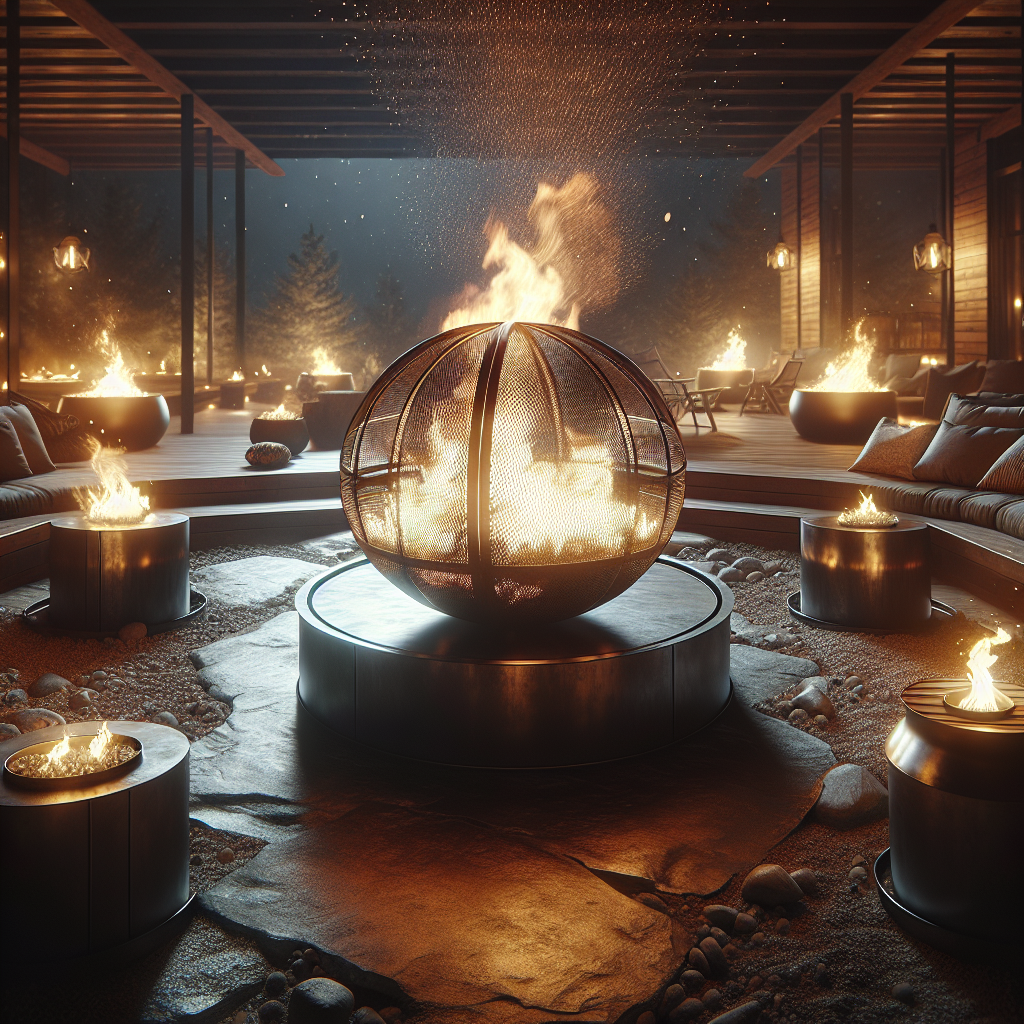
Choosing the Right Material
Intended Use
Consider how you plan to use your fire pit to determine the right material. If you’re looking for a permanent fixture in your outdoor space, then materials like cast iron or natural stone may be suitable. However, if you prefer a portable fire pit for camping trips or backyard gatherings, materials like aluminum or stainless steel may be a better choice.
Weather Conditions
Take into account the climate and weather conditions in your area when selecting a fire pit material. Some materials may be more resistant to extreme temperatures, rain, or snow, making them better suited for certain climates. If you live in an area with harsh winters or frequent rainfall, choose materials that can handle these conditions to ensure your fire pit lasts for years to come.
Maintenance
Consider the level of maintenance you’re willing to undertake when choosing a fire pit material. Some materials may require regular cleaning, sealing, or protection from the elements. If you prefer a low-maintenance option, choose materials that are resistant to rust, corrosion, or staining. Additionally, ensure that you have the necessary tools and knowledge to properly maintain the chosen material.
Budget
Your budget will ultimately impact the material you choose for your fire pit. Different materials come with different price points, so it’s important to evaluate your budget and prioritize your needs. While it may be tempting to opt for cheaper materials, investing in quality materials upfront can save you money in the long run by avoiding repairs or replacements. Consider the long-term value and durability of the materials when making your decision.
Fire Pit Safety Tips
Location
Choose a safe and suitable location for your fire pit. Make sure it is placed away from flammable materials such as trees, shrubs, and overhanging structures. Ensure there is adequate clearance on all sides to prevent accidental fires. Additionally, consider the wind direction to avoid smoke blowing towards your home or gathering area.
Clearance
Maintain proper clearance around your fire pit. This includes keeping furniture, decorations, and other combustible items at a safe distance. A general rule of thumb is to have at least a 10-foot radius of clear space around the fire pit. This helps prevent accidental burns or fires and allows for easy access in case of emergencies.
Fire Extinguisher
Always have a fire extinguisher nearby in case of emergencies. Make sure it is rated for both wood and flammable liquid fires. Familiarize yourself with how to use a fire extinguisher properly and ensure it is easily accessible. In addition to a fire extinguisher, consider having a bucket of sand or a garden hose nearby to quickly extinguish any small fires.
Supervision
Never leave your fire pit unattended, especially if there are children or pets present. Assign a responsible adult to monitor the fire at all times. This ensures that flames are properly contained, sparks are controlled, and any potential accidents are prevented. After enjoying your fire pit, make sure the fire is completely extinguished before leaving the area.
By considering factors such as safety, durability, heat retention, budget, and aesthetic appeal, you can make an informed decision when choosing the materials for your fire pit. Whether you prefer the classic look of metal, the natural beauty of stone, the warmth of clay, or the creativity of recycled materials, there are options available to suit your needs and enhance your outdoor space. Remember to follow proper safety guidelines and enjoy the warmth and ambiance of your fire pit responsibly.
